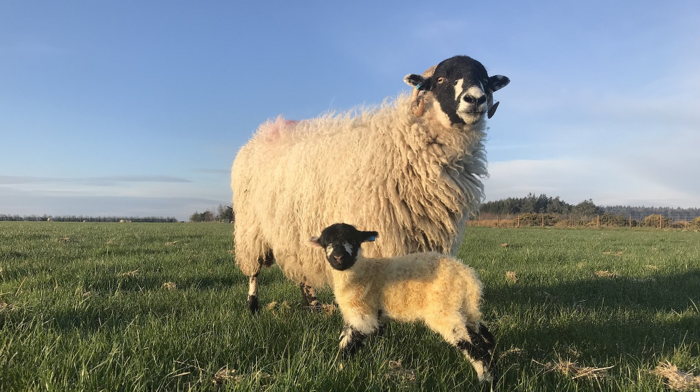Since switching to boluses six years ago, the Wilson family has seen marked improvements in their upland grazed sheep and cattle.
Crimple Head Farm in Beckwithshaw, near Harrogate, has been farmed by the Wilson family since the 1930s. Richard, now runs the farm alongside Grandfather Michael, Father David and Uncle Martin, as well as employee James.
They keep 900 Dalesbred ewes and 250 Texel-cross ewes on the 1100-acre upland farm, and Richard runs a MV pedigree Texel flock under the prefix of ‘Crimple Head’ focusing on breeding shearling rams and females for the commercial and pedigree markets.Two working trips to New Zealand led to the introduction of 50 New Zealand Romney shearlings last Autumn – Richard was impressed by the breed’s mothering ability and hardiness to lambing outdoors on minimal concentrate feeds.
The Wilson family were seeing little benefit from using a mineral drench on the ewes, so started using Animax’s Tracesure boluseson their sheep and cattle six years ago. Tracesure Sheep with Copper is given to all sheep apart from Texel’s who have the non-copper version.
Lambing is made possible with the help of four vet students. The pedigree Texels lamb first, at the beginning of March, followed by the Texel cross ewes, then the Dalesbred ewes in April. The Romney cross ewes will lamb outside from Mid-April.
“Giving a bolus is a vital part of our flock management. We use a trace element leaching bolus on all animals pre-tupping in September, and again pre-lambing when housing , alongside a 10-in-1 sheep vaccine to minimise handling time. The replacement females all have a bolus, as do the female hoggs which over winter on a neighbouring farm which seems to help with body conditionwhile away.
“For us, it is mostly about peace of mind, knowing they are getting enough of the correct trace elements, which helps them to make the most of their feed and get the nutrients they need. The ewes are in a better condition all year round, particularly for reproducingwith an increase in fertility – the lambs are born more vigorous in the harsher upland environment.”
The 900 Dalesbred ewes are also put to Teeswater and Bluefaced Leicester rams, which are well known for their hardiness and thriftiness. The crossbreeds come under various systems for breeding.
“We’ve found that the Masham lambs gain weight well and have good carcase confirmation. The best of the pure breeds from both Dalesbred and Texel are kept for breeding stock,” continues Richard.
Crimple Head Farm is also home to 100 Limousin-cross cattle, which are grazed and have access to magnesium licks throughout the summer. They calve to a pedigree Limousin Bull, mainly in a winter calving block, and surplus stores are sold at local markets. All cattle are given a Tracesure bolus, and cows and heifers are bolused before being served, as well as before calving.
“We’ve found that the calving pattern has tightened up in recent years, which we put down, in part, to introducing the boluses. We’ve had healthier calves and less retained placenta. Again, for us it is about peace of mind, knowing they’ve got the trace elements they need, helping towards improved growth rates and body condition.”
Dr Elizabeth Berry BVSc, PhD, MRCVS, Animax Company Veterinary Director says “Giving both cattle and sheep a leaching trace element bolus ensures a slow release of the essential trace elements selenium, cobalt, iodine and copper over a period of six months.Ensuring the stock is nutritionally prepared for the demands of upland farming will give returns on body condition, milk yield and good carcasses.
Getting the best out of the grass is vital to Richard and his family; “We finish as many of the sheep on grass as possible, which is why it’s important that the trace element levels are right. We judge each year separately. If they’re a long way off, we’ll sell them liveweight as stores. We try to be flexible.
“Last year was a struggle and the sheds were full so we’ve got harder on breeding selection, making them as strong as possible, removing weaknesses and repeat offenders. Every head has to pay now, both cattle and sheep, so it’s important to be efficient and make sure nutrition is up to scratch. I think it’s paying off.”
“To keep moving forward we have to be proactive – we can’t stand still. We keep looking to improve and implement ways in which we can produce the best product for the market as profitably as possible.”


